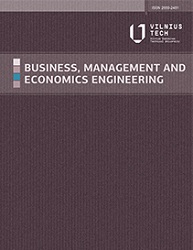Building information modelling: procurement procedure
Building information modelling: procurement procedure
Author(s): Vladimir Popov, Milena Medineckienė, Tatjana Grigorjeva, Arūnas Remigiju ZabulėnasSubject(s): Governance, Economic policy, Public Finances, ICT Information and Communications Technologies
Published by: Vilnius Gediminas Technical University
Keywords: building information modelling (BIM); BIM standards; Employer’s Information Requirements (EIR); BIM Execution Plan (BEP); public procurement;
Summary/Abstract: Traditional construction planning is being replaced by the building information modelling (BIM) approach, which seeks to digitalise all the construction procedures, including procurement. Successful implementation of BIM on the market requires the preparation of appropriate procurement documents. Purpose – to suggest the most suitable set of documents for public procurement in the context of BIM by analysing the documents that are necessary for implementing the stages of the building life cycle. Research methodology – in order to achieve the aim of the research, the in-depth analysis of different countries’ procurement methodological documents and analysis of the scientific articles have been implemented. The methodology also includes expert interviewing, which was done in order to analyse the investigated standards. Findings – After analysing the procurement procedures of Norway, Spain, France, Poland, the United Kingdom, the Netherlands, and Finland, a set of documents, including Employer’s Information Requirements (EIR), BIM Execution Plan (BEP) and BIM protocol, was considered as the most suitable for BIM-based procurement processes. In addition, the basic principles of ISO 19650-2:2018 do not reflect the specific conditions of each country, so it is appropriate to examine the possibility of providing guidance in individual national annexes that reflects the peculiarities of national procurement. Research limitations – some research limitations were related to the challenges to access the literature, particularly the regulatory documentation associated with the public procurement procedure in a singular Country. Also, the difficulties with and accessing the document in the English language. However, in most of these cases, the document overview was analysed or translated from the native language. Originality/Value – existing related studies are mainly oriented on a particular region/country, and no general overview of European countries regarding BIM procurement procedures has been implemented. Additionally, a significant scientific contribution of this research is the review of the fundamental standards, which includes the general specification for information management in construction projects using BIM. Implemented analysis can serve as a basis for other authors to implement their research concerning their region, to suggest the most appropriate and suitable set of documents. Practical implications – this study contributes to the preparation of the Lithuanian market for the implementation of BIM and could help policy-makers to prepare the most appropriate procurement documents.
Journal: Business, Management and Economics Engineering
- Issue Year: 19/2021
- Issue No: 1
- Page Range: 180-197
- Page Count: 18
- Language: English

